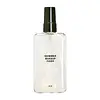What's inside
What's inside
 Key Ingredients
Key Ingredients

No key ingredients
 Benefits
Benefits

 Concerns
Concerns

 Ingredients Side-by-side
Ingredients Side-by-side

Water
Skin ConditioningPolyester-5
Alcohol Denat.
AntimicrobialPropanediol
SolventPhenoxyethanol
PreservativePolyglyceryl-2 Oleate
EmulsifyingPEG-60
HumectantHydrogenated Castor Oil
EmollientOctyldodeceth-16
EmulsifyingHydrolyzed Wheat Protein
Skin ConditioningEthylhexylglycerin
Skin ConditioningParfum
MaskingPanthenol
Skin ConditioningSodium Benzoate
MaskingAlcohol
AntimicrobialSodium Hyaluronate
HumectantCentella Asiatica Extract
CleansingCitrus Limon Fruit Extract
MaskingAchillea Millefolium Extract
CleansingArnica Montana Flower Extract
MaskingArtemisia Absinthium Extract
Skin ConditioningGentiana Lutea Root Extract
Skin ConditioningMelaleuca Alternifolia Leaf Extract
PerfumingPotassium Sorbate
PreservativeWater, Polyester-5, Alcohol Denat., Propanediol, Phenoxyethanol, Polyglyceryl-2 Oleate, PEG-60, Hydrogenated Castor Oil, Octyldodeceth-16, Hydrolyzed Wheat Protein, Ethylhexylglycerin, Parfum, Panthenol, Sodium Benzoate, Alcohol, Sodium Hyaluronate, Centella Asiatica Extract, Citrus Limon Fruit Extract, Achillea Millefolium Extract, Arnica Montana Flower Extract, Artemisia Absinthium Extract, Gentiana Lutea Root Extract, Melaleuca Alternifolia Leaf Extract, Potassium Sorbate
 Reviews
Reviews

Ingredients Explained
These ingredients are found in both products.
Ingredients higher up in an ingredient list are typically present in a larger amount.
Alcohol Denat. is an alcohol with a denaturant property. It is created by mixing ethanol with other additives.
This ingredient gets a bad rep because it is irritating and drying - mostly due to its astringent property. Astringents draw out natural oils in tissue, constricting pores and leaving your skin dried out.
However, alcohol denat. is not all that bad.
Due to its low molecular weight, alcohol denat. tends to evaporate quickly. One study on pig skin found half of applied alcohol evaporated in 10 seconds and less than 3% stayed on skin.
This also helps other ingredients become better absorbed upon application.
Studies are conflicted about whether this ingredient causes skin dehydration. One study from 2005 found adding emollients to propanol-based sanitizer decreased skin dryness and irritation. Another study found irritation only occurs if your skin is already damaged.
Small amounts of alcohol are generally tolerated by oily skin or people who live in humid environments.
The rule of thumb is if this alcohol is near the end of an ingredients list, it will probably not affect your skin much.
Also...
This ingredient has antimicrobial and solvent properties.
The antimicrobial property helps preserve products and increase their shelf life. As a solvent, it helps dissolve other ingredients.
Other types of astringent alcohols include:
Learn more about Alcohol Denat.Phenoxyethanol is a preservative that has germicide, antimicrobial, and aromatic properties. Studies show that phenoxyethanol can prevent microbial growth. By itself, it has a scent that is similar to that of a rose.
It's often used in formulations along with Caprylyl Glycol to preserve the shelf life of products.
Water. It's the most common cosmetic ingredient of all. You'll usually see it at the top of ingredient lists, meaning that it makes up the largest part of the product.
So why is it so popular? Water most often acts as a solvent - this means that it helps dissolve other ingredients into the formulation.
You'll also recognize water as that liquid we all need to stay alive. If you see this, drink a glass of water. Stay hydrated!
Learn more about Water